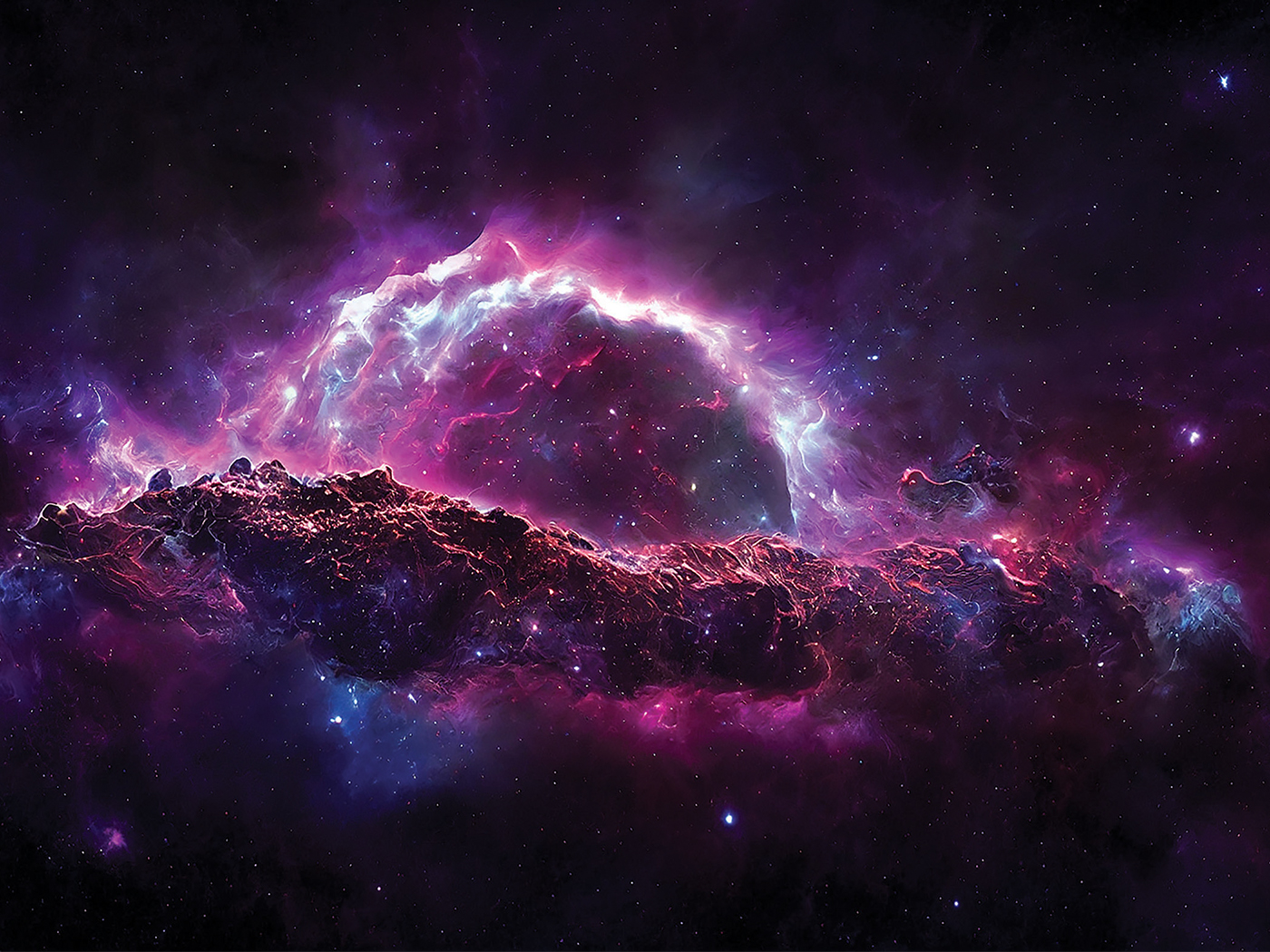The Bible describes humans as being created in the image of God—the pinnacle of His creation. In contrast, those who embrace the presupposition of naturalistic origins have put much effort and even monkey business into a propaganda crusade to claim a bestial origin for man.
The idea that humans evolved from an ape-like creature was first widely promoted by Jean-Baptiste Lamarck in the early 1800s and later by Charles Darwin in his 1871 book The Descent of Man—published 12 years after his acclaimed evolutionary treatise On the Origin of Species. Thomas Huxley, a friend of Darwin, also did much to popularize this idea. Since then, the secular scientific community has promulgated the still-hypothetical idea of human evolution as an established fact.1
After the 150-plus years since Darwin’s famous publication, we still have no fossil evidence demonstrating human evolution. Darwin believed such fossils would eventually be found, but that has simply not been the case. The following quotes from evolutionists themselves accurately sum up the current state of affairs regarding the fossil record and its wholesale lack of support for human evolution.
The evolutionary events that led to the origin of the Homo lineage are an enduring puzzle in paleoanthropology, chiefly because the fossil record from between 3 million and 2 million years ago is frustratingly sparse, especially in eastern Africa.2
But with so little evidence to go on, the origin of our genus has remained as mysterious as ever.3
The origin of our own genus remains frustratingly unclear.4
The Evolution of Human-Chimp DNA Research
Although paleontological evidence has been lacking, in more recent times evidence supporting human evolution was thought to have been found in the DNA of living apes and humans. This article will evaluate the popular myth of human-chimpanzee DNA similarity along with recent research showing that a broad and unbridgeable chasm exists between the human and chimpanzee genomes.
DNA is a double-stranded molecule that under certain conditions can be denatured—i.e., “unzipped” to make it single-stranded—and then allowed to zip back up. During the initial stages of DNA science in the early 1970s, very crude and indirect techniques were utilized to unzip mixtures of human and chimpanzee DNA, which were then monitored to see how fast they would zip back up compared to unmixed samples.5 Based on these studies, it was declared that human and chimpanzee DNA was 98.5% similar. But only the most similar protein-coding regions of the genome (called single-copy DNA) were compared, which is an extremely small portion—less than 3%—of the total genome. Also, it was later discovered by an evolutionary colleague that the authors of these studies had manipulated the data to make the chimpanzee DNA appear more similar to human than it really was.6 These initial studies not only established a fraudulent gold standard of 98.5% DNA similarity between humans and chimps but also the shady practice of cherry-picking only the most similar data. The idea of nearly identical human-chimp DNA similarity was born and used to bolster the myth of human evolution, something that the lack of fossil evidence was unable to accomplish.
As DNA sequencing became more advanced, scientists were able to compare the actual order of DNA bases (nucleotides) between DNA sequences from different creatures. This was done in a process in which similar DNA segments could be directly matched up or aligned. The differences were then calculated.
Little progress was made in comparing large regions of DNA between chimpanzees and humans until the genomics revolution in the 21st century with its emphasis on developing new technologies to sequence the human genome. Between 2002 and 2005, a variety of reports was published that on the surface seemed to support the 98.5% DNA similarity myth.
However, a careful analysis of these publications reported by this author showed that the researchers were only including data on the most highly aligning sequences and omitting gaps and regions that did not align.5 Once again, we had the same old problem of cherry-picking the data that support evolution while ignoring everything else. However, at least three of these papers described the amount of non-similar data that was thrown out. When those missing data were included in the original numbers, an overall DNA similarity between humans and chimpanzees was only about 81 to 87%, depending on the paper!
Determining DNA similarity between humans and chimpanzees isn’t a trivial task. One of the main problems is that the current chimpanzee genome wasn’t constructed based on its own merits. When DNA is sequenced, it’s produced in millions of small pieces that must be “stitched” together with powerful computers.
In large mammalian genomes like the chimpanzee, this isn’t easy, especially since very few genetic resources exist to aid the effort compared to those available for the human genome project. Because of this resource issue, a limited budget, and a healthy dose of evolutionary bias, the chimpanzee genome was put together using the human genome as a guide or scaffold onto which the little DNA sequence snippets were organized and stitched together.7 Therefore, the current chimpanzee genome appears much more human-like than it really is. In fact, a recent study by this author showed that individual raw chimpanzee DNA sequences that had poor similarity to human sequences aligned very poorly (if at all) onto the chimpanzee genome that had been assembled using the human genome as a framework.8 This is a dramatic illustration that it is not an authentic representation of the actual chimpanzee genome.
Another serious problem with the chimpanzee genome is that it appears to contain significant levels of human DNA contamination. When DNA samples are prepared in the laboratory for sequencing, it’s common to have DNA from human lab workers get into the samples. Several secular studies show that many non-primate DNA sequence databases contain significant levels of human DNA.9,10
A recent study by this author shows that a little over half of the data sets used to construct the chimpanzee genome contain significantly higher levels of human DNA than the others.8 These data sets with apparent high levels of human DNA contamination were the ones utilized during the first phase of the project that led to the famous 2005 chimpanzee genome publication.11 The data sets produced after this were added on top of the ones in the initial assembly. So, not only was the chimpanzee genome assembled using the human genome as a scaffold, but research indicates that it was constructed with significant levels of contaminating human DNA. This would explain why raw unassembled chimpanzee DNA sequences are difficult to align onto the chimpanzee genome with high accuracy; it’s because it’s considerably more human-like than it should be.
So, how similar is chimpanzee DNA to human? My research indicates that raw chimpanzee DNA sequences from data sets with significantly lower levels of human DNA contamination are on average about 85% identical in their DNA sequence when aligned onto the human genome. Therefore, based on the most recent, unbiased, and comprehensive research, chimpanzee DNA is no more than 85% similar to human.
What Does 85% DNA Similarity Mean?
So, what does 85% DNA similarity really mean? First of all, it’s important to note that for human evolution to seem plausible, a DNA similarity of 99% is required. This is based on known current mutation rates in humans and an alleged splitting of humans from a common ancestor with chimpanzees about three to six million years ago. This length of time is a mere second on the evolutionary timescale. Any level of similarity much less than 99% is evolutionarily impossible. This is why evolutionists rely on all sorts of monkey business when it comes to comparing human and chimpanzee DNA—they must achieve a figure close to 99% or their model collapses.
So, what if humans and chimpanzees are only about 85% similar in their DNA? Isn’t this pretty close, too, even if it puts evolution out of the picture? In reality, this level of similarity is exactly what one would expect from a creation perspective because of certain basic similarities in overall body plans and cellular physiology between humans and chimpanzees. After all, DNA is not called the genetic code for nothing. Just as different software programs on a computer have similar sections of code because they perform similar functions, the same similarity exists between different creatures in certain sections of their genomes. This is not evidence that one evolved from another but rather that both creatures were engineered along similar basic principles. DNA similarities between different creatures are evidence of common engineered design, and the fact that the differences in these DNA sequences are unexplainable by alleged evolutionary processes is also strong evidence of design.
The Bible says that every living thing was created according to its kind. This fits the clear, observable boundaries we see in nature between types of creatures, as well as the distinct boundaries researchers find in genomes as DNA sequencing science progresses.
In regard to humans, we are not only a distinctly different kind compared to chimpanzees and other apes, but we are also the one part of creation that stands out above all other living forms because the Bible states, “So God created man in His own image; in the image of God He created him; male and female He created them” (Genesis 1:27).
Not only is evolution a false paradigm lacking scientific support, it also directly attacks one of the key paradigms of the Bible. Humanity’s unique creation in God’s image is foundational to why Jesus Christ came to redeem us. Man became corrupt through sin from his original created state—he did not evolve that way from an ape.
References
- Menton, D. 2016. Did Humans Really Evolve from Ape-like Creatures? In Searching for Adam: Genesis & the Truth About Man’s Origins. T. Mortenson, ed. Green Forest, AR: Master Books, 229-262.
- Kimbel, W. H. 2013. Palaeoanthropology: Hesitation on hominin history. Nature. 497 (7451): 573-574.
- Wong, K. 2012. First of Our Kind: Could Australopithecus sediba Be Our Long Lost Ancestor? Scientific American. 306 (4): 30-39.
- Wood, B. 2011. Did early Homo migrate “out of” or “in to” Africa? Proceedings of the National Academy of Sciences. 108 (26): 10375-10376.
- Tomkins, J. and J. Bergman. 2012. Genomic monkey business—estimates of nearly identical human-chimp DNA similarity re-evaluated using omitted data. Journal of Creation. 26 (1): 94-100.
- Marks, J. 2011. The Rise and Fall of DNA Hybridization, ca. 1980-1995, or How I Got Interested in Science Studies. In Workshop on “Mechanisms of Fraud in Biomedical Research,” organized by Christine Hauskeller and Helga Satzinger. The Wellcome Trust, London, October 17-18, 2008.
- Tomkins, J. P. 2011. How Genomes are Sequenced and Why it Matters: Implications for Studies in Comparative Genomics of Humans and Chimpanzees. Answers Research Journal. 4: 81-88.
- Tomkins, J. 2016. Analysis of 101 Chimpanzee Trace Read Data Sets: Assessment of Their Overall Similarity to Human and Possible Contamination with Human DNA. Answers Research Journal. 9: 294-298.
- Longo, M. S., M. J. O’Neill, and R. J. O’Neill. 2011. Abundant Human DNA Contamination Identified in Non-Primate Genome Databases. PLoS One. 6 (2): e16410.
- Kryukov, K. and T. Imanishi. 2016. Human Contamination in Public Genome Assemblies. PLoS One. 11 (9): e0162424.
- The Chimpanzee Sequencing and Analysis Consortium. 2005. Initial sequence of the chimpanzee genome and comparison with the human genome. Nature. 437 (7055): 69-87.
* Dr. Tomkins is Director of Life Sciences at the Institute for Creation Research and earned his Ph.D. in genetics from Clemson University, where he worked as a research technician in a plant breeding/genetics program. After receiving his Ph.D., he worked at a genomics institute and became a faculty member in the Department of Genetics and Biochemistry at Clemson.






















